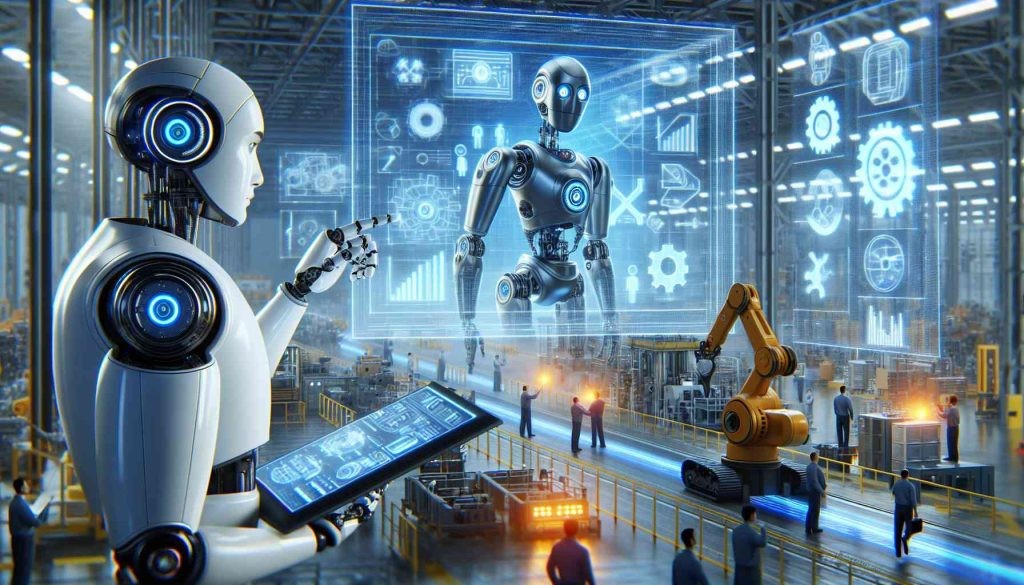Collaborative robots, often referred to as cobots, are advanced robotic systems designed to work alongside humans in shared workspaces or environments. Unlike traditional industrial robots that operate autonomously in fenced-off areas, cobots are engineered to interact safely and efficiently with human workers. This article explores the fundamentals, applications, benefits, challenges, and future trends of collaborative robots, highlighting their transformative impact across industries.
Fundamentals of Collaborative Robots
Collaborative robots are characterized by their ability to work closely with humans without the need for extensive safety measures or physical barriers. Key features include:
- Safety Features: Built-in sensors and advanced algorithms that enable cobots to detect and respond to human presence, ensuring safe interaction and operation.
- Flexibility: Lightweight and modular designs that allow easy deployment and reconfiguration for various tasks and environments.
- Human-Centric Design: Ergonomic and intuitive interfaces that facilitate programming, operation, and collaboration with minimal training.
- Task Variety: Capable of performing a wide range of tasks, from assembly and pick-and-place operations to quality inspection and packaging.
Applications of Collaborative Robots
- Manufacturing: Assisting with assembly tasks, machine tending, material handling, and quality control on production lines.
- Logistics and Warehousing: Streamlining order fulfillment, inventory management, and logistics operations in e-commerce and distribution centers.
- Healthcare: Supporting medical professionals in surgeries, rehabilitation, and patient care tasks with precision and reliability.
- Retail and Hospitality: Enhancing customer service through inventory management, restocking shelves, and handling repetitive tasks.
Benefits of Collaborative Robots
- Improved Safety: Minimizing risks of workplace injuries by operating alongside humans in shared spaces, adhering to stringent safety standards and regulations.
- Enhanced Efficiency: Optimizing workflows, reducing cycle times, and increasing productivity through continuous operation and automation of repetitive tasks.
- Flexibility and Scalability: Easily adaptable to changing production demands and operational requirements without costly reprogramming or infrastructure changes.
- Workforce Empowerment: Empowering human workers by handling physically demanding, repetitive tasks and allowing them to focus on more complex and value-added activities.
Challenges in Collaborative Robots
- Complex Integration: Ensuring seamless integration with existing systems, processes, and workflows while maintaining safety and performance standards.
- Cost Considerations: Initial investment costs, ongoing maintenance, and training expenses may be higher compared to traditional automation solutions.
- Technical Limitations: Addressing technical challenges such as limited payload capacity, speed constraints, and precision in certain applications.
- Regulatory Compliance: Adhering to regulatory requirements and standards for safe human-robot collaboration in various industries and regions.
Future Trends in Collaborative Robots
- AI and Machine Learning: Advancements in AI algorithms for enhanced decision-making, adaptive learning, and real-time responsiveness in dynamic environments.
- Sensor Technology: Integration of advanced sensors for improved perception, object recognition, and environmental awareness in complex tasks.
- Collaborative Ecosystems: Developing interoperable systems and standards to facilitate seamless collaboration between cobots, humans, and other automation technologies.
- Industry-Specific Applications: Expanding into new sectors such as agriculture, construction, and entertainment with specialized cobot solutions tailored to unique industry requirements.
Conclusion
Collaborative robots represent a significant advancement in robotics technology, bridging the gap between automation and human-centric work environments. By enabling safe, efficient, and flexible collaboration between humans and machines, cobots are poised to revolutionize industries ranging from manufacturing and logistics to healthcare and retail. As technology continues to evolve and adoption rates increase, addressing challenges related to integration, cost-effectiveness, and regulatory compliance will be essential for unlocking the full potential of collaborative robots in driving productivity, innovation, and sustainable growth in the global economy.





+ There are no comments
Add yours